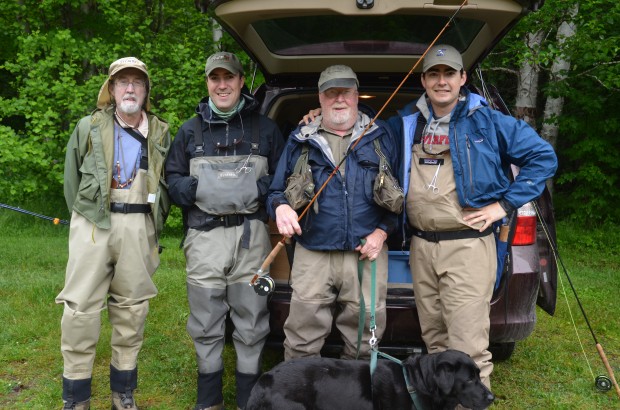
The fishing party, left to right: Ed McCarty, one of the best guides I’ve ever met, me, Marc Aroner of Spinoza Rod Company, and his son Jonas Clark. Izzy the dog adopting her most nonchalant pose. Photo courtesy of Jonas Clark.
Atlantic salmon fishing has been described as many things: “the fish of a thousand casts” and “a jerk on one end waiting for a jerk on the other” to name only two that come to mind. Of all the descriptions, this is the one I have come across most frequently: “the king of fish, the sport for kings.” How refreshing, then, to find a river that makes these kings available to the kings’ men.
This is the Margaree: a beautiful river, with a democratic character. But unlike other salmon rivers, where the water is private and, as a consequence, often eye-wateringly expensive, the Margaree is accessible. At least in price, it is. Getting there is another matter. Situated in a heart of Cape Breton, Nova Scotia, the trip is an epic one: 12 hours from Boston, according to Google maps. And that’s without pitstops.
I had heard about the Margaree for years. Friends had fished it. I had read articles, and one book, about it. I’ve read the posts on SpeyPages from the Margaree enthusiasts. And, for years, I’ve stared at Pierre Lutz’s painting of the Margaree, a gift from my dad which has hung on my walls, wondering what the place was like. What awaits is worth it: the Margaree is a fine river. At least, it looks like it.
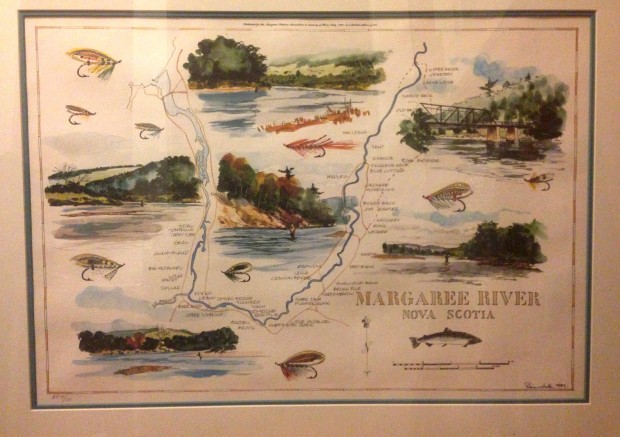
The Pierre Lutz painting of the Margaree River that has hung on my wall for years, partially responsible for inspiring this trip to the river.
The week I was there I saw little evidence of salmon. I fished hard with two experienced fishermen, both of whom had fished the river for years, and only one of us rose a salmon. In telling one friend this, they replied flatly, “That is salmon fishing.” They do have a point; I fished for one entire week on the Grand Cascapedia with 8 of the most experienced anglers I know and none of us so much as got a bite. We all have a pin showing a skunk to commemorate this remarkably poor showing on one of the world’s greatest salmon rivers. It was the same on the Margaree the last week in June of this year, but for the pin, which we also lack.
And yet, here’s the thing about salmon fishing: I made some good friends, ate well, and fell in love with the place. And that was on a “bad” week. How bad can this sport get if bad is always that good?
**
James T. Grey, author of the definitive guide to the Margaree, wrote, “In the wildest and most scenic portion of the mountain fastness is the source of the N.E. Margaree, principal tributary of the river system.” If you look at a map, this is deep in a roadless wilderness. Trials there are, but roads this area lacks. On Cape Breton, the main road traces the coast, with few criss-crossing the interior. Driving around the Cabot Trail, one understands why: the cliff views are dramatic. But for the fog, whales, bogs, and signs for moose, the white-knuckle windy cliff drives remind one of California or Italy. It’s some of the best driving I’ve ever done. And I’ve done a lot of it.
Over the last 25 years, I have driven North in search of fertile salmon water nearly every year. Inevitably there comes a point at which I come to a fork and take it, left or right, off the main road and onto the smaller, more rugged roads. My week or two of salmon fishing has always been a divergence, a brief detour. In fishing for salmon on Cape Breton, this possibility seems extended: the proportions of the cliffs, and the distance of the drives, makes it impossible to be a brief detour. You come here not by chance, with a sense of purposes. Only when the fishing was bad did I take a detour and find out what else the island offered.
**
My hosts for the week were Marc Aroner and his son Jonas Clark. Marc, like my dad, has spent years devoted to making bamboo rods – and is still at it. He started in 1973 as an apprentice to Tom Maxwell and Tom Dorsey at the Thomas & Thomas Rod Company. Now, he has his own company, Spinoza Rod Company. If you don’t know of his work, check out his site – it’s really well managed – and has a good blog, with regular updates. His son, Jonas, is my doppelgänger: at 3o something, he grew up fishing for Atlantic salmon, often with bamboo, and with many of the same people. I’ve never met another guy my age like that, and though we’ve only fished together once, I have a sense it’s the first of many.
Marc is a true original. In a world of telephone poles masquerading as Spey rods and Bogdan reels, Marc fishes with short — very short — bamboo rods, reels with a light drag, and large flies. These he loves nearly as much as the stories he is quick to tell. He’s a natural storyteller, a gifted craftsman, and one hell of a fisherman. Unable to go to the Cascapedia this year, I sent him in my place. When we spoke, after the trip, he had hooked at least 14 fish, and landed most of them, including some fish in the low 30s and one true monster. All this on a bamboo rod. I’ve seen this happen only once before, by a guy who liked skating dry flies with an 8′ something Leonard on the Cascapedia. If you’re rich, or a rod maker, this makes sense. To the rest, it’s madness.
My other hosts for the week were the people of Cape Breton. This may sound trite, but it’s not meant to be: they are some of the consistently most generous, warm people I’ve met in a long time. The last time I remember such hospitality from strangers was in the Lough-filled country of County Galway, Ireland. Take, for example, the guy I met on the first morning at dusk who showed me where to fish in an very long and, to me, entirely unknown pool. Or the four retired friends who shared their beer, their humor, and their solicited advice, freely. Or the greeter at the Margaree Salmon Museum. Or John Hart, President of the Margaree Salmon Association, who took the time to answer my many questions this last winter. Or Mike Allen, author of the New Handbook for Margaree, who also answered many question. The names go on.
A model of this Cape Breton behavior is Ed McCarty, a renowned guide on the river, if not the island. I’ve been fortunate to fish with many guides, but Ed is among the very best, and the nicest. Though semi-retired, I’d recommend him to anyone who will listen. He’s world-class; one of the King’s Men, as I think of them now. You can find a profile of him, as well as some of his photography, in this issue of Ten & Two magazine.
**
The fishing the week I was there was far from good; it was nearly nonexistent. I had heard the summer run was improving and, presented with a rare window of unemployment between two jobs, struck North to join Marc on the Margaree. After seeing one guy raise a fish next to me on a dry fly shortly after dawn on my first morning, I didn’t see another fish move for a fly until my second to last day, and that wasn’t even on the Margaree. Jonas moved a nice fish on a Labatt Blue bomber, and that fish moved only once. One move from this group over six days was, I admit, a reality I struggled to accept. Between Jonas and Marc, who know the river like the back of their hands, I was confident we would catch something. I thought this with every new pool: this looks so classic, so fishy. And again, nothing. And again, hope strung eternal.
And so it was that we took to tying flies, to talking, eating, and to cooking. One day, on the drive home, we stopped in a tidal ocean bay and harvested oysters, some of which we ate on the spot, pried open with my pocket knife, the water they contained dripping right back into the bay that nurtured them. Later that evening, with a gin martini and a giant pork chop, they made a cabin feast. Yet later, I’m confident they spurred some creative fly tying. We took over a small room who purpose was otherwise unclear and turned it into a tying room. The following morning, all manner of Alec Jackson spey hooks, deer hair and arctic fox were strewn across the table. The results looked good, but didn’t catch a damned thing besides our imagination.
One bright and sunny day, tired of fruitless casting, I set out on the Cabot Trail. The “trail” is better described as a two lane scenic highway that forms a loop, the lower half of which circles the heart of Cape Breton, while the northern half traces the east and west coasts of the Highland National Park. It is some of the most beautiful, and most cliff-bound, driving I have ever done. Only the road to Erice, Sicily comes close, and for that imagine a piece of cooked pasta crumpled and thrown against the side of a cliff, and you’ll begin to approximate the road we took to reach the town.
Upon inquiring about the Cabot Trail, I was told I would be presented with a bounty of wildlife: whales, breaching and blowing; moose, trampling out of the endless marshlands that form of the northern interior of Cape Breton; and deer, also prolific on the island. Like the salmon, I heard of them but saw none. And yet, the drive was awe-striking. And the golf was world-class.
Golf? Indeed. Cape Breton sports two truly remarkable courses. In driving onto the island my first day, I stopped at Cabot Links, a new course on the southwest shore of the island, to inquire about rates and a tee-time. I was unprepared: the rate for 18 holes was $150. This, on an island hours from civilization and where the black flies and moose outnumber the population, was startling to me. The Highland Links, at $79, was a much better deal and, it turns out, the best gold course I’ve ever played. And I don’t say this only because the course not only traces a salmon river, but actually involves it. On the 6th hole, for instance, you are presented with the following choice: to tee off over the salmon river, or next to it. Let me repeat that: you can tee off over the salmon river, or next to the salmon river. Such choices may not have seemed like such a remarkable choice when Stanley Thompson designed the course in 1941, but today it seems like a choice plucked from history. I shot terribly, in part because I was trying to spot fish, and wishing I had ditched my 4 iron in favor of a travel 8 wt rod. Charles McGrath’s story in the NY Times hadn’t warned me. How was I to know?
**
How was I to know? To know that this river was as beautiful as it was? That the people would be so generous? The fish so sparse? And yet, the friends and golf so good? I had no idea. And that’s why I loved it.
I will be back to the Margaree just as soon as my job, and my new mortgage, will allow. The Kings’ Men will be there, waiting with a story and a laugh. Hopefully they will also be waiting with a salmon.
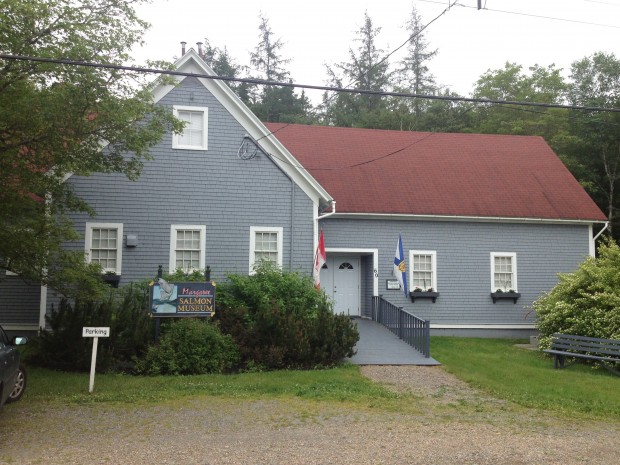
The front of the Margaree Salmon Museum — one of the finest salmon museums you’ll find, akin to the museum on the Grand Cascapedia.


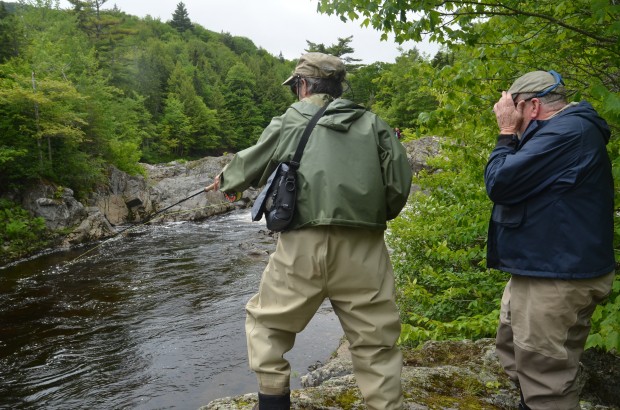
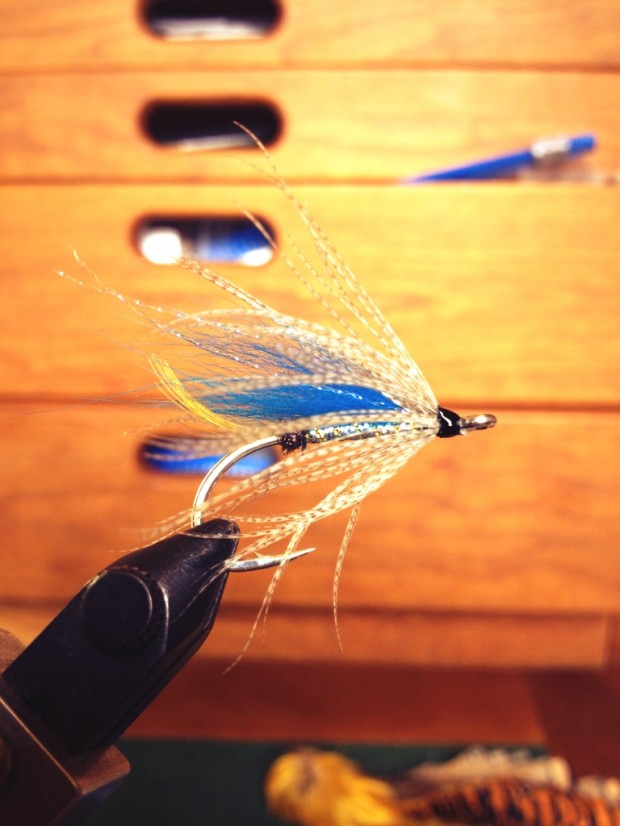
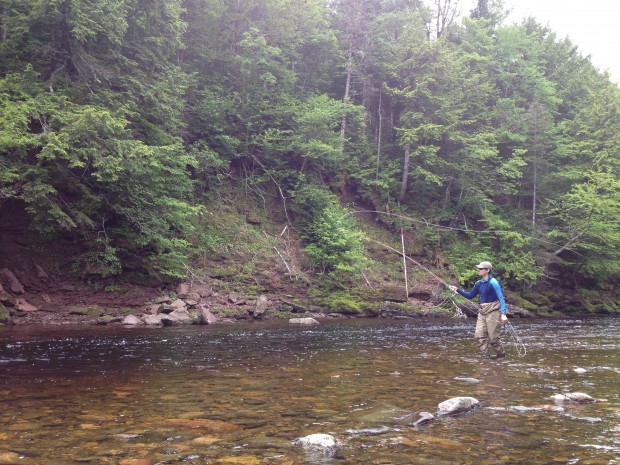
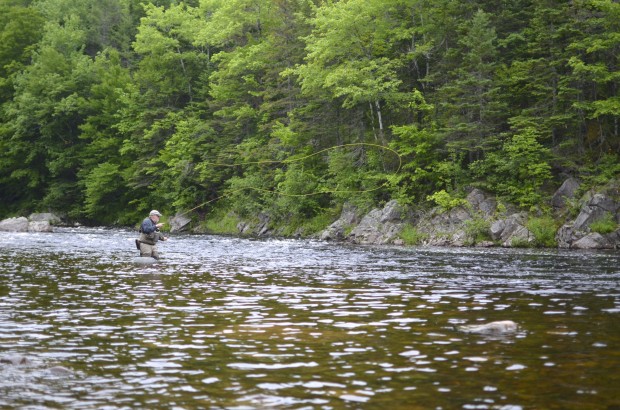
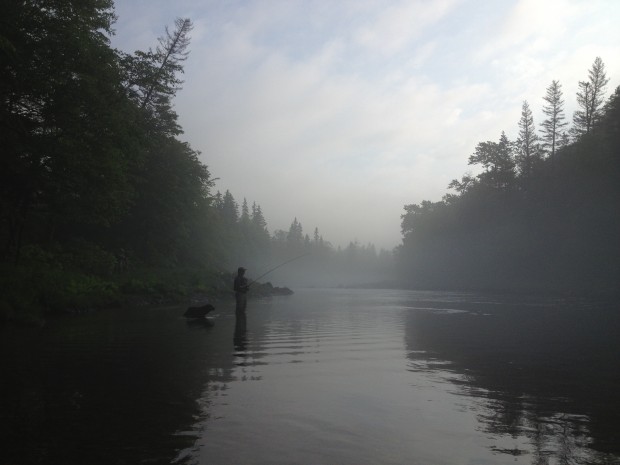
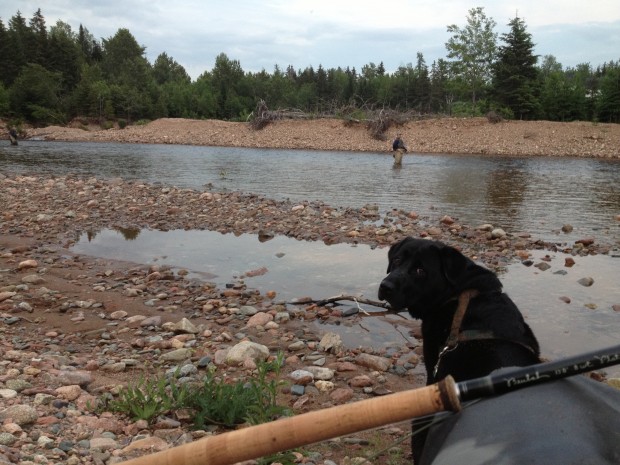
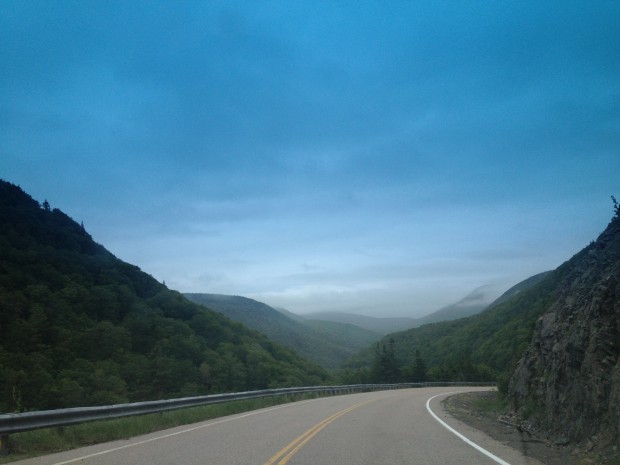
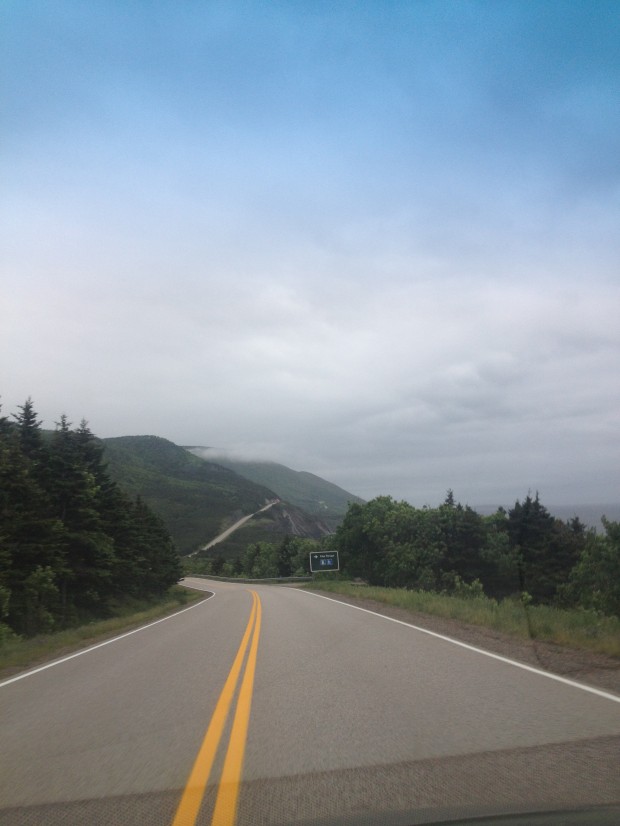
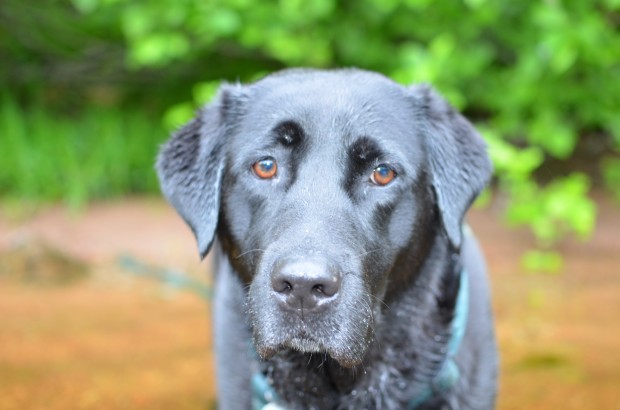
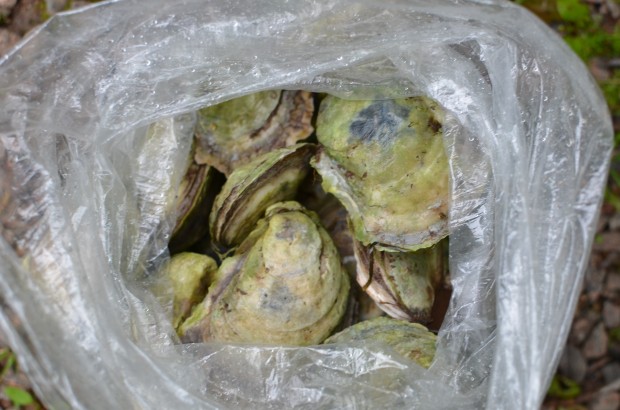
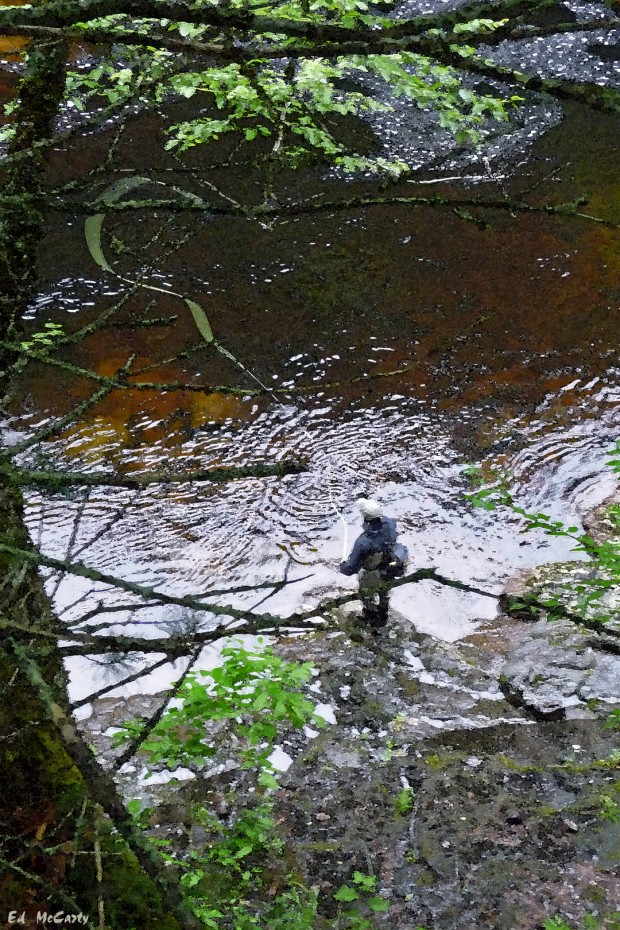
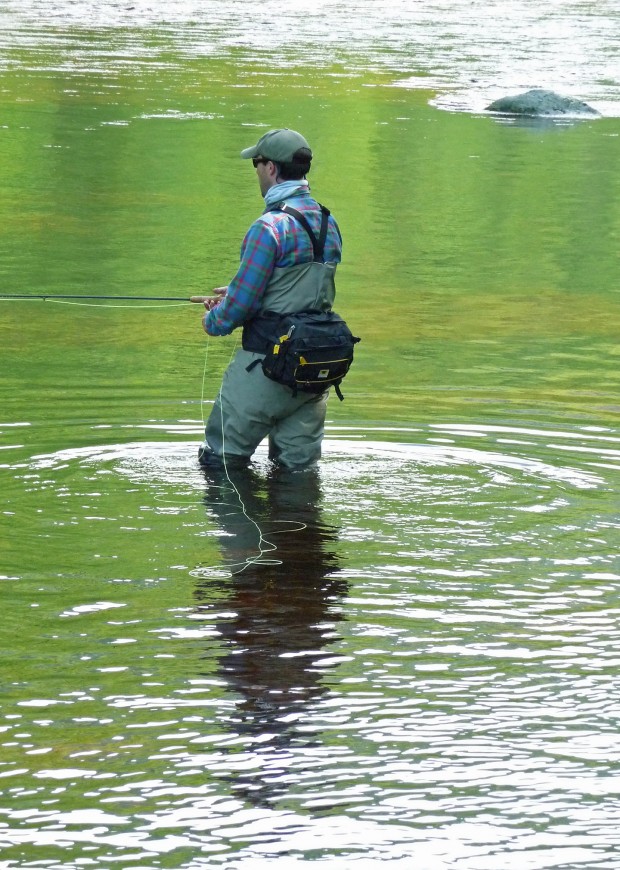
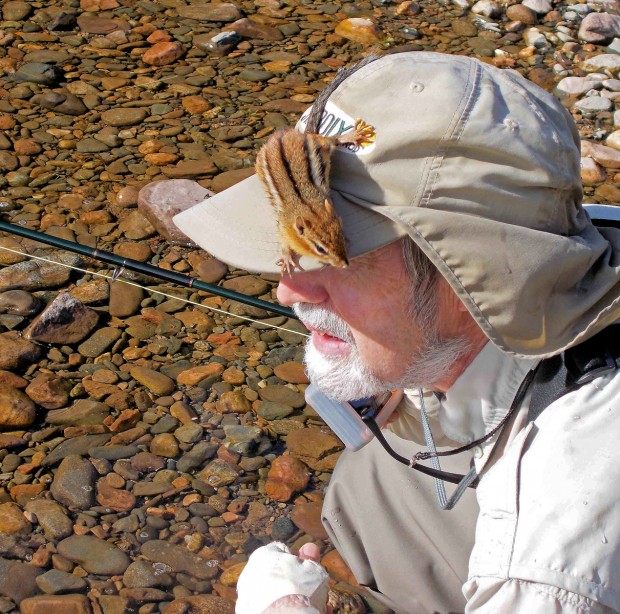
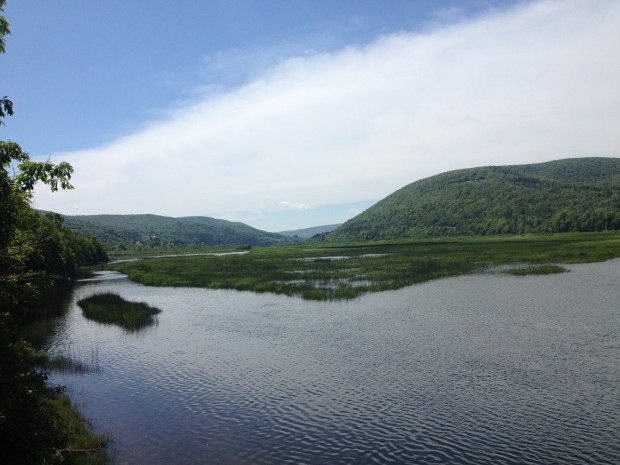

Pingback: Margaree Recap
Sound like every salmon trip I take–no fish! But there’s always the next time.
Keith: It certainly does sound like some salmon trips we’ve taken together, doesn’t it? But then we did have that one great morning on that back channel on the Grand. Funny how it works. Hope you’re well! – Ben
Great piece Ben – next time we’ll see if we can get a fish or ten. I have a hunch there may be a few hiding in Laird’s Run…
Thanks, Jonas! And I sure hope so. Best, Ben
I have twice been to the Margaree and on the last day of my last trip raised and hooked my first, and only, tail-dancing salmo salar. Off toward the ocean, drag screaming, and pop! nothing left but a pounding heart and a sad story to tell. Thanks for the memories. This is one river to which I will return … I pray.
Bob: We’ve all been in your shoes — as this post shows! Hope you hook into another sometime soon. Best, Ben
Pingback: Margaree Recap - Spinoza Rod Company
Pingback: Videos: Spinoza Rod Company Workshop - New England On The FlyNew England On The Fly